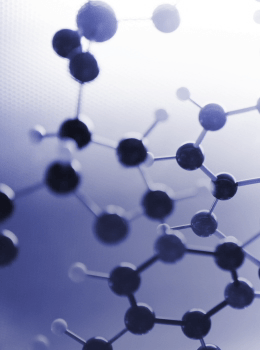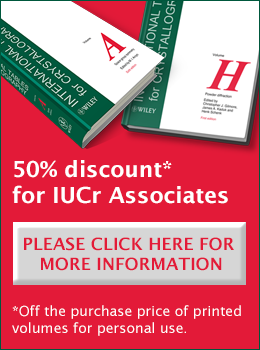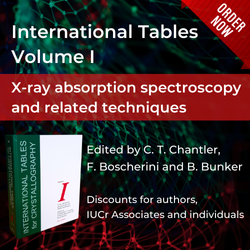
History of crystallography
Mineralogists and crystallographers at the Berlin Natural History (Naturkunde) Museum
![BerlinNKthumbnail [BerlinNKthumbnail]](https://www.iucr.org/__data/assets/image/0009/158616/BerlinNKthumbnail.jpg)
The Berlin Naturkunde Museum. Photograph by the authors.
The Berlin Naturkunde Museum – Natural History Museum remembers some mineralogists and crystallographers from a time when the interest in understanding nature was much less compartmentalized than it is today. Here, we present memorials of Carl von Linné, Martin Heinrich Klaproth, René-Just Haüy, Christian Samuel Weiss and Eilhard Mitscherlich.
![[BerlinNKBuchMuller]](https://www.iucr.org/__data/assets/image/0010/158617/BerlinNKBuchMuller.jpg)
![[exhibitionhall]](https://www.iucr.org/__data/assets/image/0011/158618/BerlinNKexhibitionhall.jpg)
The Berlin Naturkunde Museum was founded in 1810 and has been at its present location, at Invalidenstraβe 43, since 1889. The two full-figure statues flanking the entrance honour the geologist and paleontologist Leopold von Buch (1774−1853) and the physiologist and anatomist Johannes Müller (1801−1858). The mineral collections of the Museum date back to 1700 and were initiated by the Prussian Academy of Sciences. They represent 75% of the minerals in the world. The Hall of Minerals exhibits 4500 specimens of a total of 250,000. The four scientists remembered below contributed to the development of classical crystallography to a smaller or greater extent. Eilhard Mitscherlich's discovery of crystallographic isomorphism has had relevance even for protein crystallography. Here, we present the images of their memorials in the Naturkunde Museum and augment them with selected other memorials elsewhere.
![[BerlinNKLinne]](https://www.iucr.org/__data/assets/image/0003/158619/BerlinNKLinne.jpg)
![[BerlinNKStockholmstatues]](https://www.iucr.org/__data/assets/image/0004/158620/BerlinNKStockholmstatues.jpg)
Carl von Linné (Carolus Linnaeus, 1707−1778) was one of the giants of science in the field of natural philosophy. He is best known for his taxonomy of plants. His contributions to crystallography were considerable given the state of sophistication of the field at this time, but were dwarfed in comparison with his other activities. Some early crystallographers, such as R.-J. Haüy, considered Linné a pioneer of the science of crystallography (see [1], p. 44). Linné was interested in the shapes of crystals; he drew them and prepared their wooden models. Incidentally, the authors of this contribution first learned about crystal shapes using wooden models in their studies at Eötvös University Budapest. Linné attempted to classify crystals according to their forms.
![[BerlinNKKlaproth]](https://www.iucr.org/__data/assets/image/0005/158621/BerlinNKKlaproth.jpg)
Martin Heinrich Klaproth (1743−1817) was a German pharmacist and chemist. He is best known for his discoveries of uranium and zirconium; co-discoveries of titanium, strontium, cerium and chromium; and for the validation of tellurium and beryllium having first been described by others. He originated from modest circumstances; he was a tailor's son and grew up in Wernigerode, Kingdom of Prussia. He studied pharmacy in Berlin and in several other cities, and he ran a pharmacy in Berlin for many years. He developed a true research laboratory adjacent to his pharmacy, conducted investigations, and published 84 papers. He became a member of the Berlin Academy of Sciences and, eventually, a paid officer of the Academy. He lectured in chemistry at the Prussian Royal Artillery, and his last appointment was a professorship in chemistry at Berlin University.
We feel motivated to say a little more about the discovery of tellurium. The Hungarian polymath Pál Kitaibel (1757−1817) worked at the medical school in Pest (Buda and Pest were separate cities at the time) and did research in chemistry, mineralogy, hydrology and botany. He discovered a new element in 1789 but did not name it. Eventually, he learned that it had already been discovered in 1782 by the Austrian mineralogist Franz-Joseph Müller von Reichenstein (1740−1825) in Transylvania (currently in Romania) while Müller was analyzing gold ores. It was not an easy discovery as it was difficult to distinguish it from antimony, an element already known. Müller called the new element aurum paradoxium and metallum problematicum and sent a sample to Klaproth, who identified it and named it tellurium (the Latin tellus means earth). In contrast to frequent disputes in connection with the discovery of new elements, both Klaproth and Kitaibel readily acknowledged Müller's priority.
![[BerlinNKHauy]](https://www.iucr.org/__data/assets/image/0006/158622/BerlinNKHauy.jpg)
René-Just Haüy (1743−1822) was born into a poor family in the north of France. He studied thanks to scholarships and was ordained as a Roman Catholic priest in 1770. He had broad interests turning him to botany and then to crystallography. According to a story, his attention to crystal structures was first caught by the smooth planes of the crystal faces he observed when he accidentally dropped a crystal and it broke. His many contributions to the development of crystallography are documented throughout the chapters of the Historical Atlas of Crystallography [1]. The second, updated edition of Haüy's principal work, Traité de Cristallographie, appeared in 1822 and was reprinted in 1968 [2].
![[BerlinNKWeiss]](https://www.iucr.org/__data/assets/image/0007/158623/BerlinNKWeiss.jpg)
Christian Samuel Weiss (1780−1856) was a German mineralogist. He taught physics in Leipzig and was appointed Professor of Mineralogy at the University of Berlin in 1810. He was among the pioneers of modern pre-X-ray-diffraction crystallography. He introduced or expanded classification, instrumentation and mathematical techniques into his science.
![[BerlinNKMitscherlich]](https://www.iucr.org/__data/assets/image/0008/158624/BerlinNKMitscherlich.jpg)
Eilhard Mitscherlich (1794−1863) was a German chemist who, in 1819−1821, first described crystallographic isomorphism. He was born around today's Wilhelmshaven into an intellectual family. He studied philology at the University of Heidelberg. Then he switched to chemistry at the University of Göttingen. From 1818, he worked in a chemical laboratory in Berlin and established that corresponding phosphates and arsenates crystallize into the same form. This observation was the seed for his theory of crystallographic isomorphism (isos – equal and morphe – form). Mitscherlich first presented his observation in December 1819 at the Berlin Academy of Sciences and published it in French in 1820 [3]. The true significance for crystallography began appearing one hundred years later. Consider the following definition for isomorphous compounds: they have nearly identical structures except that one or more atoms are replaced by chemically similar ones. This is what was most successfully utilized in the structure determination of systems of ever-increasing size, the technique being called isomorphous replacement.
Recently, one of us followed the intricacies of how this utilization began in protein crystallography, including how some of the principal participants remembered it [4]. This paper was appended with a summary of selected references of the beginning of isomorphous replacement in crystallography ([4], pp. 638−639) based on the International Tables of Crystallography [5] and Neil Isaac's historical review [6]. The applications culminated in the first great successes of the isomorphous replacement method in the analysis of protein structures, viz. myoglobin by John C. Kendrew et al. [7] and haemoglobin by Max F. Perutz et al. [8]. Kendrew and Perutz shared the Nobel Prize in Chemistry in 1962 "for their studies of the structures of globular proteins." Application of Mitscherlich's observations remains fruitful even over two hundred years after he made them.
In his subsequent years, following the discovery of the law of isomorphism, Mitscherlich made substantial contributions in the area we would call today 'physical chemistry and catalysis', with results of lasting value in organic chemistry, inorganic chemistry, mineralogy and geology. He was among the pioneers of recognizing the phenomenon of crystallographic polymorphism, when the composition of the crystal is the same but its form is different [9]. This phenomenon has far-reaching consequences; suffice it to mention its pharmaceutical significance and the numerous lawsuits related to it.
Mitscherlich made a prescient observation in 1844 that a "solution of commercial tartaric acid rotated the plane of polarized light to the right while solutions of 'racemic' acid had no rotatory power" (see Jenny P. Glusker referring to Jean Baptiste Biot [1], p. 91). Mitscherlich carried on his research almost to the end of his life. He received national and international recognition for his work; among them was a gold medal from the Royal Society of London for his discovery of the law of isomorphism.
Acknowledgment
We thank Professor Johannes Vogel, Museum für Naturkunde Berlin, for kind assistance.
References
[1] Lima-de-Faria, J. (1990). Editor. Historical Atlas of Crystallography. Dordrecht: Kluwer Academic Publishers.[3] Mitscherlich, E. (1820). Ann. Chim. Phys. 14, 172–190.
[4] Hargittai, I. (2022). Struct. Chem. 33, 635–639.
[6] Isaac, N. (2016). Acta Cryst. D72, 293–295.
[9] Mitscherlich, E. (1822). Ann. Phys. 1, 125–127.
Copyright © - All Rights Reserved - International Union of Crystallography








